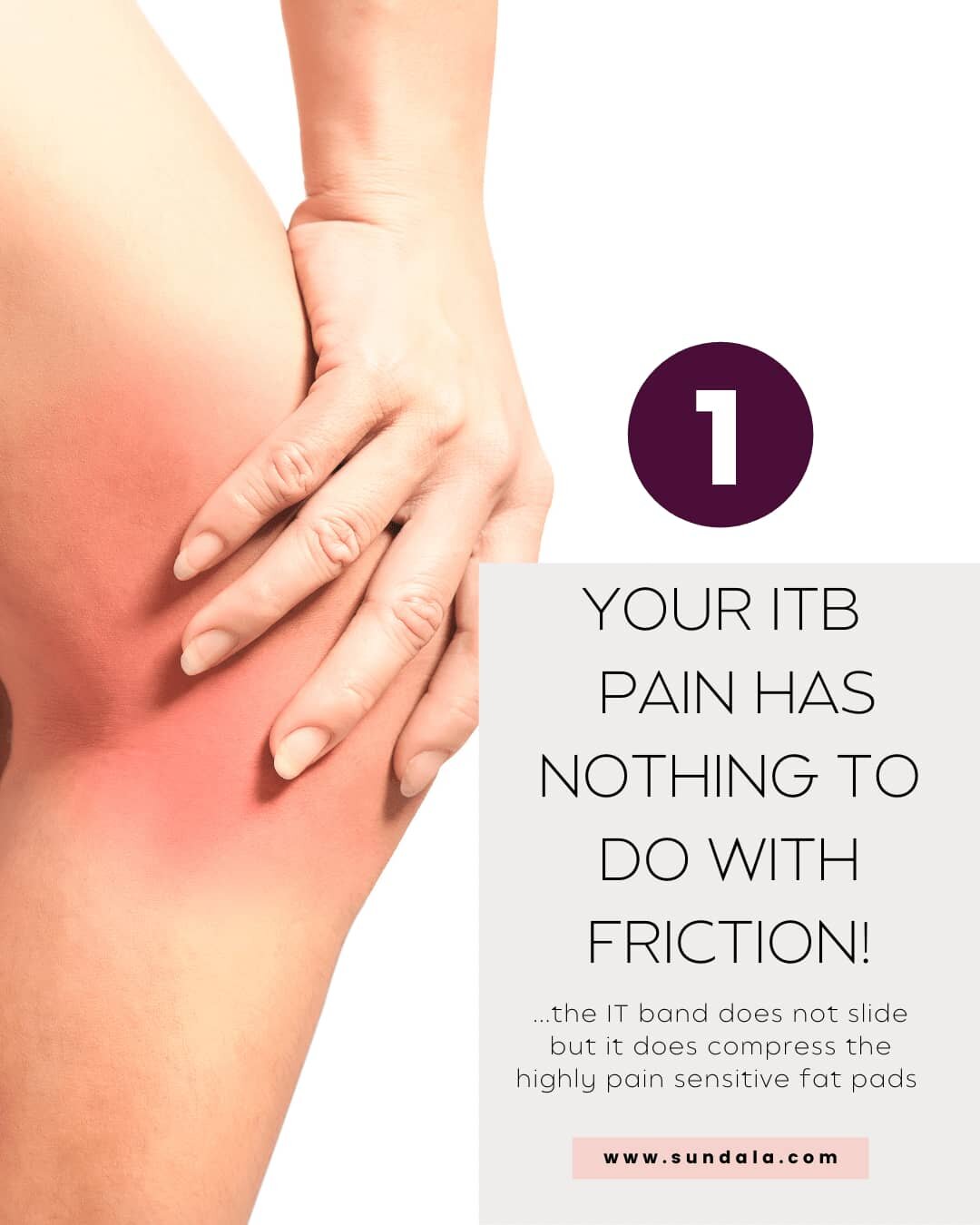How to Prevent IT Band Related Knee Pain For Good
Prevention of IT Band Related Knee Pain
Cue the groaning sounds from the gym-goer foam rolling their IT band next to you on their mat. You either know them, or you are them! STOP IT! Preventing IT band-related knee pain was always a mystery since old theory highlighted it as a friction issue, and foam rolling became a right of agonizing passage. The tissue isn't mobile, and it isn't sliding over anything. In fact, new research reveals that it has nothing to do with friction and everything to do with compression forces.
i rEMEMBER WHEN MY IT BAND PAIN BEGAN! DO YOU?
It was the Lake Placid Half Ironman 4 years ago; by the time I began the half marathon leg of the race, I was on the struggle bus from starting off swimming in frigid temps and battling 56 miles of cold rain and wind on the bike. As I made my way out of transition and down the first hill leaving the Olympic village, the cheering spectator's support was a beacon of encouragement. Not even at mile 1, I felt a sharp pain electrocute outside my right knee. It felt as if a Beebee gun had pelted me. Every step felt like fire, and running was no longer an option. Determined to finish my first half ironman, I walked the remainder of the 13.2 miles despite the knee pain. Tears, step, tears, step. I finished the race, received my medal, a finisher's pic, and an Iliotibial Band 'Friction' Syndrome diagnosis. This is exactly why I will tell you how to prevent IT band-related knee pain, what the newest research has revealed, and why foam rolling is a thing of the past!
WHAT EXACTLY IS THE ILIOTIBIAL BAND AND WHAT'S ITS FUNCTION?
The IT Band is a dense and wide piece of connective tissue that starts up by the top of the hip. Its attaches to two important muscles that provide stability to both the hip and the knee. It stores, releases, and transmits loading forces from the glutes down to the leg when you are in a single-leg stance. So runners, how often are you using one leg at a time? Tens of thousands of times. It spans down the side of the thigh and inserts itself onto a knobby-like bone on the outer and upper part of the shin, called the fibular head. This area below the outside of the knee is most commonly where sharp discomfort is felt with IT Band related knee pain.
WHAT IS CAUSING MY IT BAND RELATED KNEE PAIN?
The old belief system, dating back to the 1970s, thought that the IT Band attachment below the knee would rub or create inflammation through repetitive friction, typically seen in runners. This is suspected to be due to the legs' constant turnover: knee bending and straightening over and over again. New research reveals that instead of friction, the pain that one feels is due to compression of the sensitive structures, like the outer fat pad of the knee. In fact, those with pain-free knees can show a completely different picture on MRIs. Go figure!
STOP TRYING TO STRETCH THE IT BAND!
Since the IT Band acts like a force-generating spring, why would you want to stretch it out? Stretching it will contribute to weakening its force transmission abilities. Say good-bye to power and support!
PUT THE FOAM ROLLER ASIDE AND STRENGTHEN THOSE HIPS
You now know that stretching or rolling the ITB won't do you any good but what should you do? Research points to the following:
Calm your symptoms down first...meaning, change up your exercise routine and hold back on doing anything that brings on your pain
Re-assess your training form...if you are a runner, get a professional run assessment to see if you're breaking down in your form
Use a 3 tier progressive program to retrain hip strength and stability
Tier 1: low to no-load, open-chain --> Jane Fondas, Clamshells, Glute Bridges
Tier 2: moderate load positions, closed chain --> Mini squats, Lunges, Step-Ups
Tier 3: high load with the addition of sport-specific impact movements --> weighted squats, single-leg squats, plyometrics, bounding
This tiered approach is the newest way to approach the most common complaint of outer knee pain.
Seek an appropriate medical diagnosis. Have an evaluation by a Physical Therapist well versed in running biomechanics.
Consider Trigger Point Dry Needling to assist in myofascial release for a quicker rebound to pain free movement.
If you struggle with ITB pain, you might want to consider a gait analysis and / or coaching if you are a runner with recurring pain. Click the link below for information on services!




